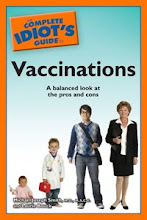It's hard (for me, at least) not to click on the headline "Up to half of Spanish-translated prescriptions include dangerous mistakes" as a May 12 Fierce Healthcare post declared. The post cited a recent Pediatrics study that found that translation programs used by pharmacies to create Spanish-language instructions for patients were deeply flawed.
The Pediatrics study evaluated Spanish medicine labels from 209 pharmacies in the Bronx, New York; most of the pharmacies used computer programs to translate instructions for patients from English into Spanish. Half of the the translated labels used a mixture of Spanish and English, or had grammatical or spelling mistakes, resulting in "inconsistent and potentially hazardous" translations, according to the authors.
"Phrases that were not translated included 'dropperfuls,' 'apply topically,' 'for 7 days,' 'for 30 days,' 'apply to affected areas,' with juice,' 'take with food,' and 'once a day,'" the Pediatrics study's authors wrote. Mistranslated phrases included the substitution of "eleven times a day" for the phrase "once a day."
The move toward e-prescribing, electronic medical records, and other technological advances is supposed to make the practice of medicine safer and cheaper. The famous 1999 Institute of Medicine report, "To Err is Human: Building a Safer Health System" which found that up to 100,000 people die in hospitals each year from medical errors, helped shift the needle toward more standardization and digitization of medicine.
The Centers for Medicare and Medicaid (CMS) encourages the adoption of electronic medical records (EMR) and will soon provide financial incentives to health care providers who adopt them. In February, FierceHealthIT pointed out that "a healthy $20 billion in IT spending [from the stimulus bill]... will largely be funneled through CMS to provide incentives for EMR adoption."
All good, if you support health care reform and patient safety. But throwing technology at problems has its limitations, as the Pediatrics study makes clear. The study's authors suggested more regulation of and funding for better translation programs. Meanwhile, other unresolved IT issues, such as ensuring the electronic security of patients' health information, will continue to pose challenges for health IT for a long time to come.
skip to main |
skip to sidebar

A fly on the wall of medicine, exploring public health and family health
BlogHer
About Me

- Laurie Bouck
- I am a freelance medical writer based in Northern California, and I am interested in public health and parenting topics. I have freelanced since 2003, and worked as a staff writer at a medical publishing company before I went solo. My work includes consumer health articles written for magazines, newspapers, websites, and blogs. I have also covered health and technology for custom, online, and traditional publishers, and I am the co-author of The Complete Idiot's Guide to Vaccinations. I hope that my blog helps you better understand the complex, sometimes contradictory, and always interesting forces that shape health in the United States and beyond. Photo credit: Nancy Warner, www.warnerphoto.com


